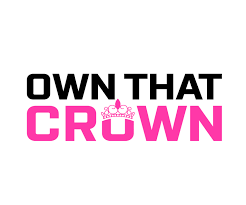
Win Your Next Pageant
Thank you for reading this post, don't forget to subscribe!Get Pageant Questions Written By A Miss Universe Judge
More from Heimler’s History:
ULTIMATE REVIEW PACKETS:
+APUSH:
+AP World History:
AP Essay CRAM Course (DBQ, LEQ, SAQ Help):
Support Heimler’s History on PATREON:
HEIMLER’S HISTORY MERCH!
Instagram: @heimlers_history
For more videos on APUSH Unit 3, check out the playlist:
In this video Heimler reviews everything you need to know for Unit 3 the AP U.S. History curriculum which is set in period 3 (1754-1800).
This period stretches from the French and Indian War to the election of Thomas Jefferson.
The French and Indian War (part of the larger Seven Years’ War) was fought on the American continent between the British colonists and the French, along with their Indian allies. The British won, but the expense of the war led to the increase in taxes in the colonies like the Sugar Act, the Stamp Act, and other restrictions on trade like the Navigation Acts.
The colonists had developed an understanding of Parliamentary representation based on location rather than class. So when they cried out against the new taxes because they had no representation in Parliament, they responded by saying the colonists had virtual representation (i.e., all classes of British citizens were represented).
However, having drunk deeply of Enlightenment thinkers like John Locke and Jean Jacques Rousseau, this situation became untenable. The American Revolution effectively began on July 2, 1776 when the Declaration of Independence was signed by the Continental Congress (it was made public on July 4th).
The colonists, by all counts, should not have won the American Revolution, and yet because of the leadership of George Washington and some much needed foreign aid from the French, Americans threw British rule from their shoulders.
The first governing document of the new nation was the Articles of Confederation which invested most of the power in the states at the expense of the federal government. This weakness was made plain in Shays’s Rebellion.
Soon thereafter a Constitutional Convention was called and under the leadership of folks like Alexander Hamilton and James Madison, a New Constitution was proposed and written.
Two factions formed around these debates: the Federalists and the Anti-Federalists. The Federalists argued that the Constitution should be ratified by the states, and did so through a series of influential essays called The Federalist Papers. The Anti-Federalists opposed the new Constitution because it invested too much power in the central government and lacked a Bill of Rights.
Ultimately, the Federalists won this battle and the Constitution of the United States became the new governing document in America.
If you have any questions, leave them below and Heimler shall answer forthwithly.
This video is aligned with the AP U.S. History Curriculum and Exam Description for Unit 3 and all the key concepts and learning objectives thereunto appertaining…(read more at source)
GET 365 FREE: Pageant Questions
CHECK OUT MORE: Pageant Coaching
ON SALE: Pageant Resale
LEARN ABOUT: Beauty Pageants



 Subscribe to Our RSS Feed
Subscribe to Our RSS Feed




you my n i gg a
I have a whole ass final today that I had no idea about
So I could be wrong but I thought that five people were killed in the Boston Massacre.
I made an 83 thanks to you( I usually always make high sixties or low seventies)Thank you!
anyone here watching this for their apush final exam
Bruh I still haven’t taken any unit test AP test yet soo I’m confused but gotta study
i love you
Hi Mr. Heimler! I really appreciate your videos and effort and it's really motivating me to study and do well so far as a sophomore in APUSH.
I have a question though: If slavery was banned in the new states as stated in the Northwest Ordinances of 1785,87 etc.,, how come the people migrating west brought their enslaved peoples with them? Was it because the Northwest Ordinances granted the protection of "private property" and the enslaved people were considered as such?
Thanks!
me writing out 10 page study sheets for a unit 3 test tomorrow
How do you talk so quick, think so constantly and not stop for 25 min…..
This man has done better in 25 minutes than most teachers in the entire year
Slow down plz
god bless you
POV: the test is today and you haven’t done any notes
You, sir, are a life saver.
I haven't touched the book for this period and my test is tomorrow haha…
Pov: Exam is tomorrow and you’re studying last minute at 4am
Totally fucked for my test tomorrow. Watching this at 3 am. Hopefully it helps.
Thank you for recommending this to me after i took the period 3 test, youtube
Our teacher never told us when our test would be. Found out today that its tomorrow. THANK YOU HEIMLER! You've gotten me a 95+ on both of my previous tests 🙂
Watching these videos help so much, thank you!